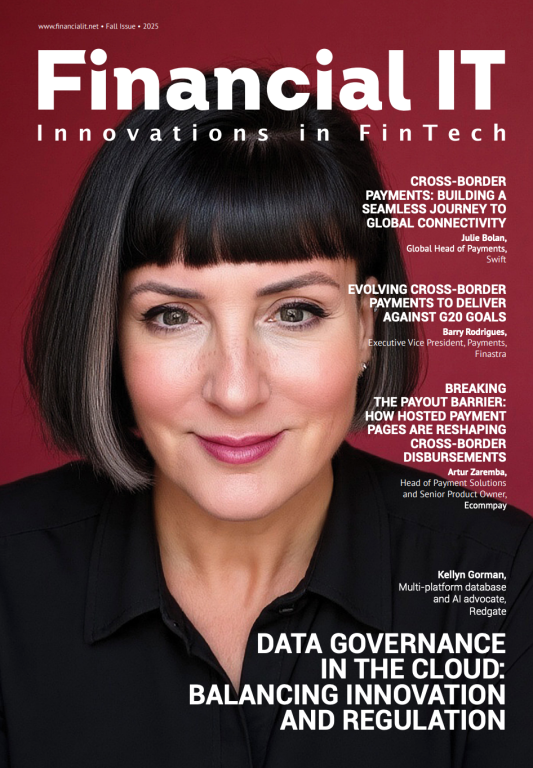Aggregation + Banking APIs + Convenience = Automated Banking

- Gary Fegan, Financial Services Solutions at Fujitsu Digital
- 23.05.2016 11:00 am Banking
I was at a really interesting conference on APIs and PSD2. The event was very light on PSD2 but it did allow me to test out my thinking about the future of banking aggregation. In this blog I’m going to refrain from littering it with PSD terms and just put across my thoughts.
But let me go off on a tangent for a second, people will sacrifice control of confidential data and security for convenience. Ask someone if they feel comfortable giving over their biometric details – the majority will say no. Just look at what happened when the UK government tried to bring in the national ID card in 2010? Public outrage, how dare the government hold all this information, what if there was a data breach? Queue the cancellation in 2011; why, because the public couldn’t see the benefit to them, they could only see this as an invasion of privacy and a security risk.
Now in the USA there are millions of people handing over full control of their online bank accounts to a 3rd party applications like Mint, because it makes their lives easier. Yes, this is full control, whilst the owners of these services such as Mint may promise that they won’t withdraw all your savings and spend it at Vegas, once you hand over your username and password they have every ability to do so.
Why on earth would anyone be so crazy to circumnavigate all the security measures that a bank put in place and give away the keys to the safe to some website / mobile app? The answer is because it’s convenient. Mint is an aggregator service that will log into your accounts and screen-scrape your balances and statements – this enables it to aggregate all your data into a single location and offer value added services on top like budgeting. Sounds great doesn’t it? Well not really, what if there’s a breach and someone does clean out all the accounts, jumps on a flight to Vegas and bets it all on red? Well it is comparable to leaving your house front door open and a sign on the street saying “please help yourself” then trying to claim on your home insurance. But despite this, there are millions of users.
So when in January 2018 the European banks will be legislated to offer a much safer and granular method for account aggregation via published and secure APIs then the likes of Mint will become not only secure but common place, in fact if the banks want to control branding and channel marketing they’ll need to offer these aggregator services themselves.
So far nothing new or startling but let’s take the aggregator model another year or two into the future. Let’s combine the convenience of the aggregator, all your financial information in one place, then add in the familiar services of the price comparison providers. So now we have all your financial information and history along with what’s available in the market place. It doesn’t take a genius to then be able to automatically offer a customer the best financial products for a customer to put their savings, manage their current account or even source a loan or credit card.
And this seemed to be the thinking at the conference but I think this is isn’t anywhere near the end-game. I think that rather than offer you the best place to put your money, it will go a step further and move it for you. Whilst account switching and origination is currently slow, cumbersome and generally not worth the bother, this is all about to change too. Account opening will be practically instantaneous with identities and assertions of authenticity passed between banks and other identity service providers such as mobile phone operators. It doesn’t take a great deal of imagination to see the demise of the plastic card where mobile wallets become the norm, so there’s not even a delay in using your new account beyond sweeping funds across from the account that has ceased to be as competitive.
With this new breed of aggregator, you won’t necessarily know where your money is held. If it’s most efficient for your £10,000 to be spread over 4 accounts all offering 6% interest between £2,000 and £3,000 then that’s where the money should go. Same goes for making a payment, if account X offers the best rates and lowest charges for an overseas payment then the aggregator application would instruct the mobile wallet which account to use.
The argument at the conference was that people wouldn’t feel their money was safe and they’d want to explicitly be in control of what accounts they open and what funds are where. Well it wouldn’t be difficult to put an optional approval step into the decision making and I’d say after a few weeks that most would disable this and go straight to automatic.
If a trusted brand like MoneySupermarket.com was to offer this service and have a number of options such as UK banks covered by FSCS only, or even a selection list of options you consent to using, then any worries about the accounts used would be alleviated.
As for the aggregator, they reap the commission for opening new accounts or on how much money they sweep across, if an aggregator gets £5 for opening a TSB 5% account and only £3 for opening a RBS 5% account, then where do you think the money will go? UK Banks currently spend around £400m trying to convince us to switch accounts annually, this spend is likely to move away from targeting individuals with the promise of £100 to multiple smaller payments to these aggregators come financial supermarkets.
Imagine the impact Mint.com will have on the market with just its current 10 million users. You could envisage an automatic run on the bank just because either its products are uncompetitive in the market or the commission it pays to a dominant aggregator is too low.
As another aside, I believe the saving and current account market will fundamentally shift to create a whole new suite of narrower and targeted products to counter this, after an initial rate war; just like the 0% interest balance transfer credit card “rate tart” period. These new products will need to include more stringent acceptance criteria for the customer to reap their market beating benefits being offered; be it in fees or a minimum balance to maintain stickiness.
If people are willing to hand over the keys to their bank accounts today, just so they can see all their banking information in a single place, then why wouldn’t these 10 million users sign-up for a more secure service using APIs. A service that gives them the same aggregator and budgeting services that are so useful now but automatically, like a passively managed fund, makes the best use of a customer’s money automatically?
With open banking APIs set to go way beyond what is mandated by the regulators then I don’t see this being at all far-fetched, in fact I see it as inevitable.
























